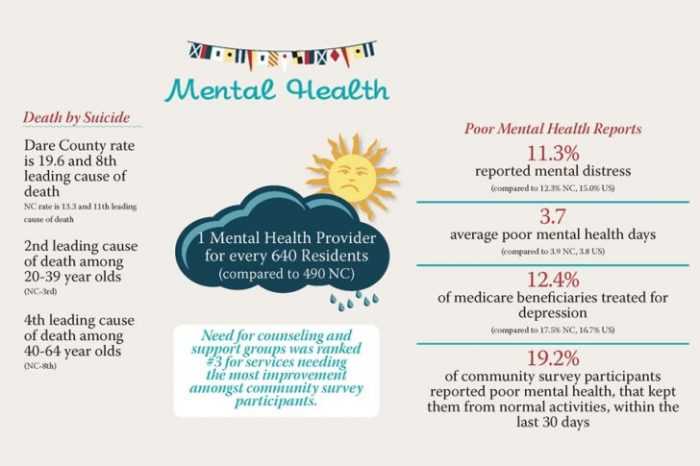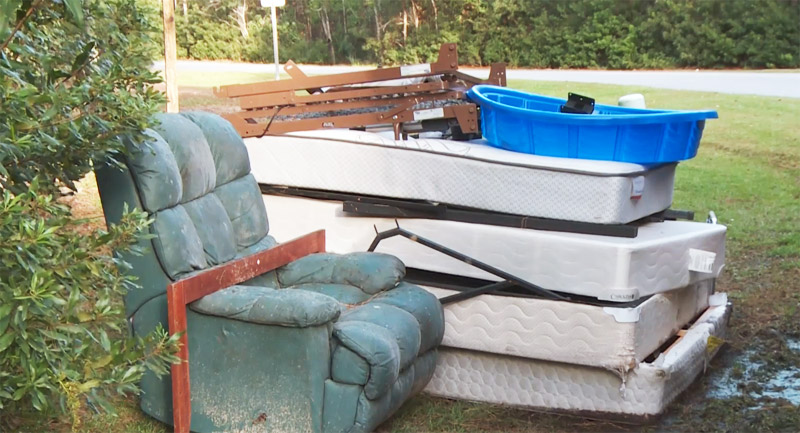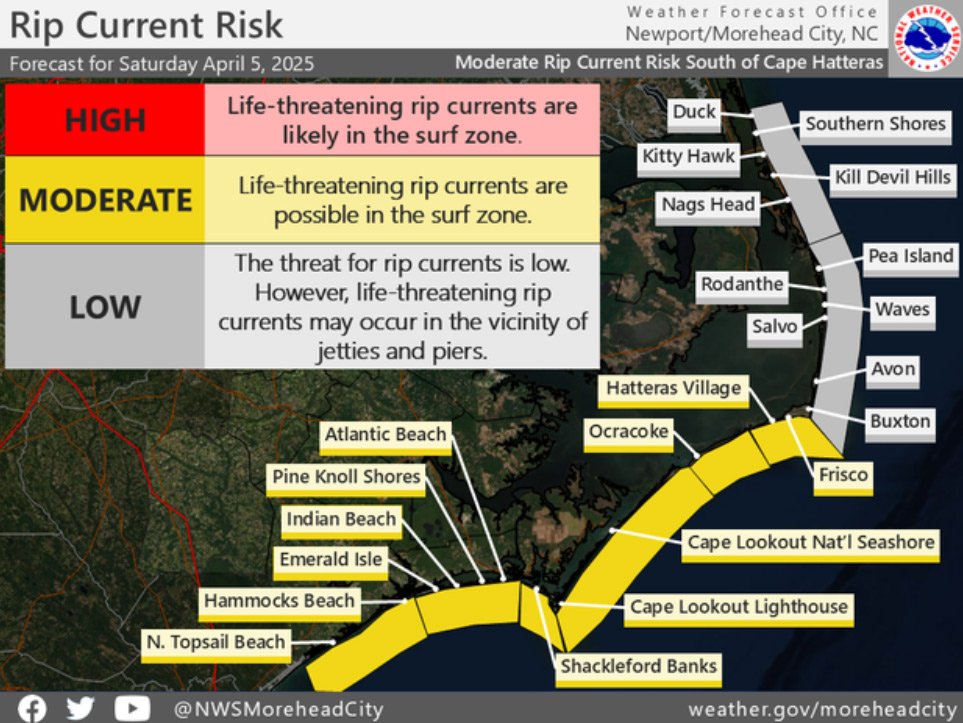Suicide, overdose rates among Dare health concerns
2019 assessment reflects some economic worries

Some aspects of life in Dare County get glowing reviews in a survey reported in the county’s 2019 Community Health Needs Assessment, an analysis conducted in counties across the state every three years to determine potential gaps that may require attention and resources.
Indeed, a solid 72% of those who took the survey said Dare County is a good place to raise children; 82% agreed with the statement that it’s a safe place to live; and a majority (57%) believe it offers plenty of help for those in times of need.
But there are some sobering survey findings related to local economic issues. Nearly six in ten, 57% of Dare County residents, disagreed with the statement that there is plenty of economic opportunity in the county, while only 17% agreed. In addition, 75% indicated that it lacked affordable housing options.
The assessment also revealed that 8.2% of Dare County residents live in poverty and 32.4 % of students in county Schools are eligible for the free lunch program. And a top county health official says there may be a connection between this economic unease and the problems with mental health and substance abuse documented in the assessment.
Developed under the umbrella of the Healthy Carolinians of the Outer Banks partnership, data for the health needs assessment was pulled from more than 700 community surveys, local focus groups and other state and federal data sources.
Mental health and substance abuse ranked as top Dare County priorities in the 2019 assessment. Those concerns have been a recurring theme in past health assessments as well, and the county has responded in recent years by creating a number of task forces and initiatives aimed at combating issues such as the opioid crisis and reducing stigmas related to mental health.
The assessment does contain some worrisome numbers related to mental health. Death by suicide in the county increased from a rate of 16.8 per 100,000 in the period from 2010-2014 to a rate of 19.6 from 2013-2017. That significantly exceeds the statewide suicide death rate of 13.3%.
In Dare County, suicide is eighth-leading cause of death. Breaking that down by age groups, suicide ranks as the second-leading cause of death among those between the ages of 20 and 39 and the fourth-leading cause of death among residents between 40 and 64.
On the substance abuse issue, the rate of Dare County drug overdose deaths reported in the assessment was 19.4 deaths per 100,000, higher than both the North Carolina and national rates and falling well short of the Healthy North Carolina 2020 target of 9.9 deaths per 100,000.
The assessment also found that 18.2 % of adults Dare County drink alcohol excessively, compared to 16.7 % statewide. As for the community survey respondents, 32.4 % reported drinking excessively one or more times in the last 30 days.
The data in the assessment also points to a relative scarcity of mental health providers locally. It shows that there is one mental health provider for every 640 residents in Dare County. That compares with one for every 490 residents statewide.













